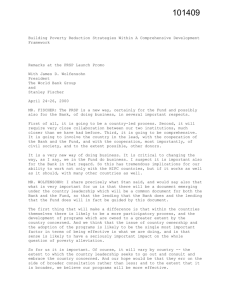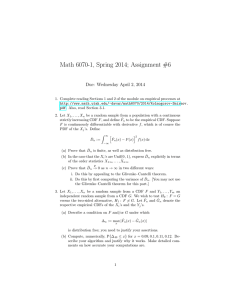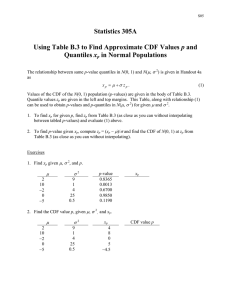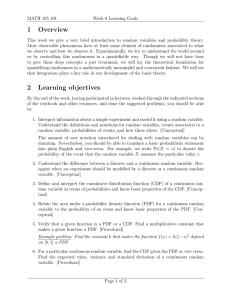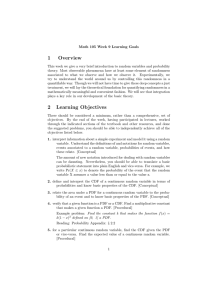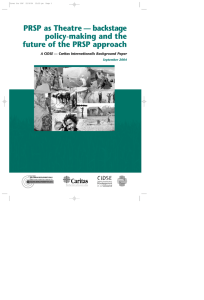T C D F
advertisement
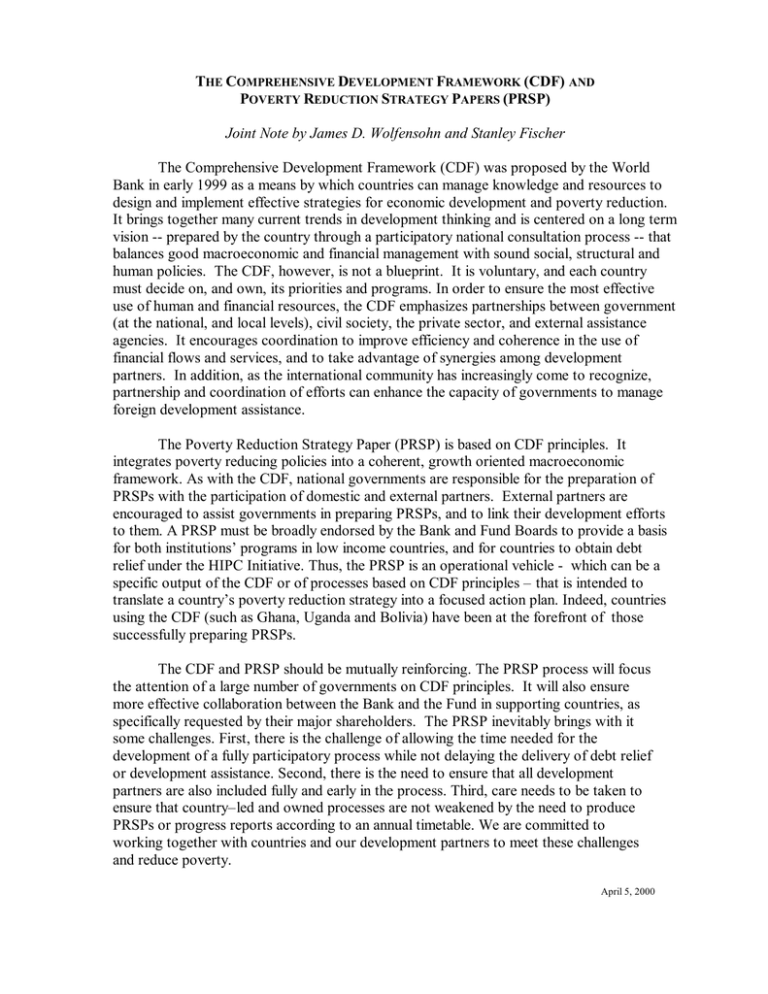
THE COMPREHENSIVE DEVELOPMENT FRAMEWORK (CDF) AND POVERTY REDUCTION STRATEGY PAPERS (PRSP) Joint Note by James D. Wolfensohn and Stanley Fischer The Comprehensive Development Framework (CDF) was proposed by the World Bank in early 1999 as a means by which countries can manage knowledge and resources to design and implement effective strategies for economic development and poverty reduction. It brings together many current trends in development thinking and is centered on a long term vision -- prepared by the country through a participatory national consultation process -- that balances good macroeconomic and financial management with sound social, structural and human policies. The CDF, however, is not a blueprint. It is voluntary, and each country must decide on, and own, its priorities and programs. In order to ensure the most effective use of human and financial resources, the CDF emphasizes partnerships between government (at the national, and local levels), civil society, the private sector, and external assistance agencies. It encourages coordination to improve efficiency and coherence in the use of financial flows and services, and to take advantage of synergies among development partners. In addition, as the international community has increasingly come to recognize, partnership and coordination of efforts can enhance the capacity of governments to manage foreign development assistance. The Poverty Reduction Strategy Paper (PRSP) is based on CDF principles. It integrates poverty reducing policies into a coherent, growth oriented macroeconomic framework. As with the CDF, national governments are responsible for the preparation of PRSPs with the participation of domestic and external partners. External partners are encouraged to assist governments in preparing PRSPs, and to link their development efforts to them. A PRSP must be broadly endorsed by the Bank and Fund Boards to provide a basis for both institutions’programs in low income countries, and for countries to obtain debt relief under the HIPC Initiative. Thus, the PRSP is an operational vehicle - which can be a specific output of the CDF or of processes based on CDF principles – that is intended to translate a country’s poverty reduction strategy into a focused action plan. Indeed, countries using the CDF (such as Ghana, Uganda and Bolivia) have been at the forefront of those successfully preparing PRSPs. The CDF and PRSP should be mutually reinforcing. The PRSP process will focus the attention of a large number of governments on CDF principles. It will also ensure more effective collaboration between the Bank and the Fund in supporting countries, as specifically requested by their major shareholders. The PRSP inevitably brings with it some challenges. First, there is the challenge of allowing the time needed for the development of a fully participatory process while not delaying the delivery of debt relief or development assistance. Second, there is the need to ensure that all development partners are also included fully and early in the process. Third, care needs to be taken to ensure that country–led and owned processes are not weakened by the need to produce PRSPs or progress reports according to an annual timetable. We are committed to working together with countries and our development partners to meet these challenges and reduce poverty. April 5, 2000



